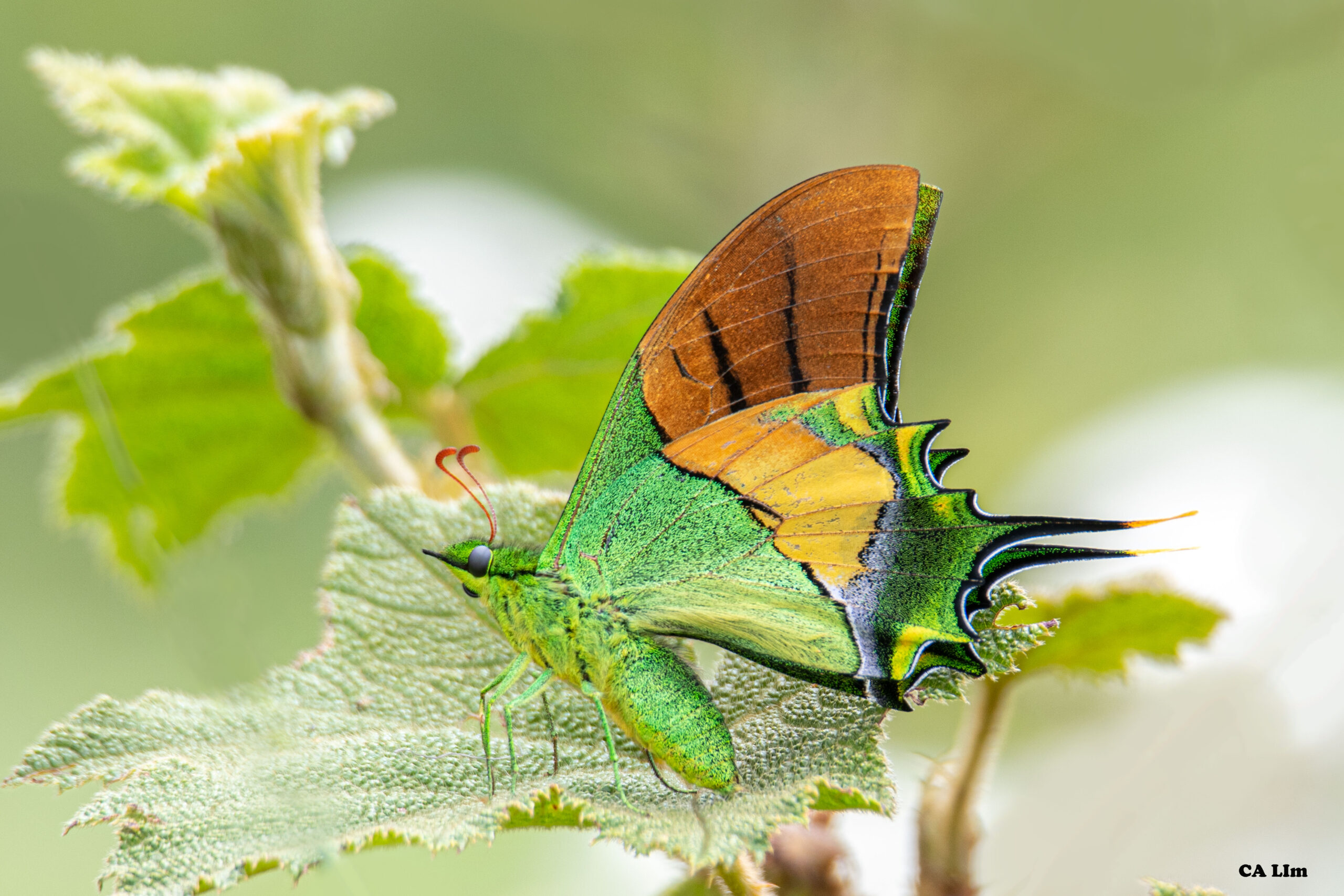The Kaiser-I-Hind (Teinopalpus imperialis) is a rare species of swallowtail butterfly. It is listed as Near Threatened (NT) on the IUCN Red List. The butterfly is a superb green, black and orange, tailed butterfly from the mountainous forests of the Nepal to West and South China, Myanmar, North Thailand, Laos, North and Central Vietnam and China. The common name literally means “Emperor of India”.
Although widely distributed, it is very local and rare. Some of the forests still retain their original character, but human population pressure is increasing their degradation through fire, deforestation, grazing and fuelwood collecting.
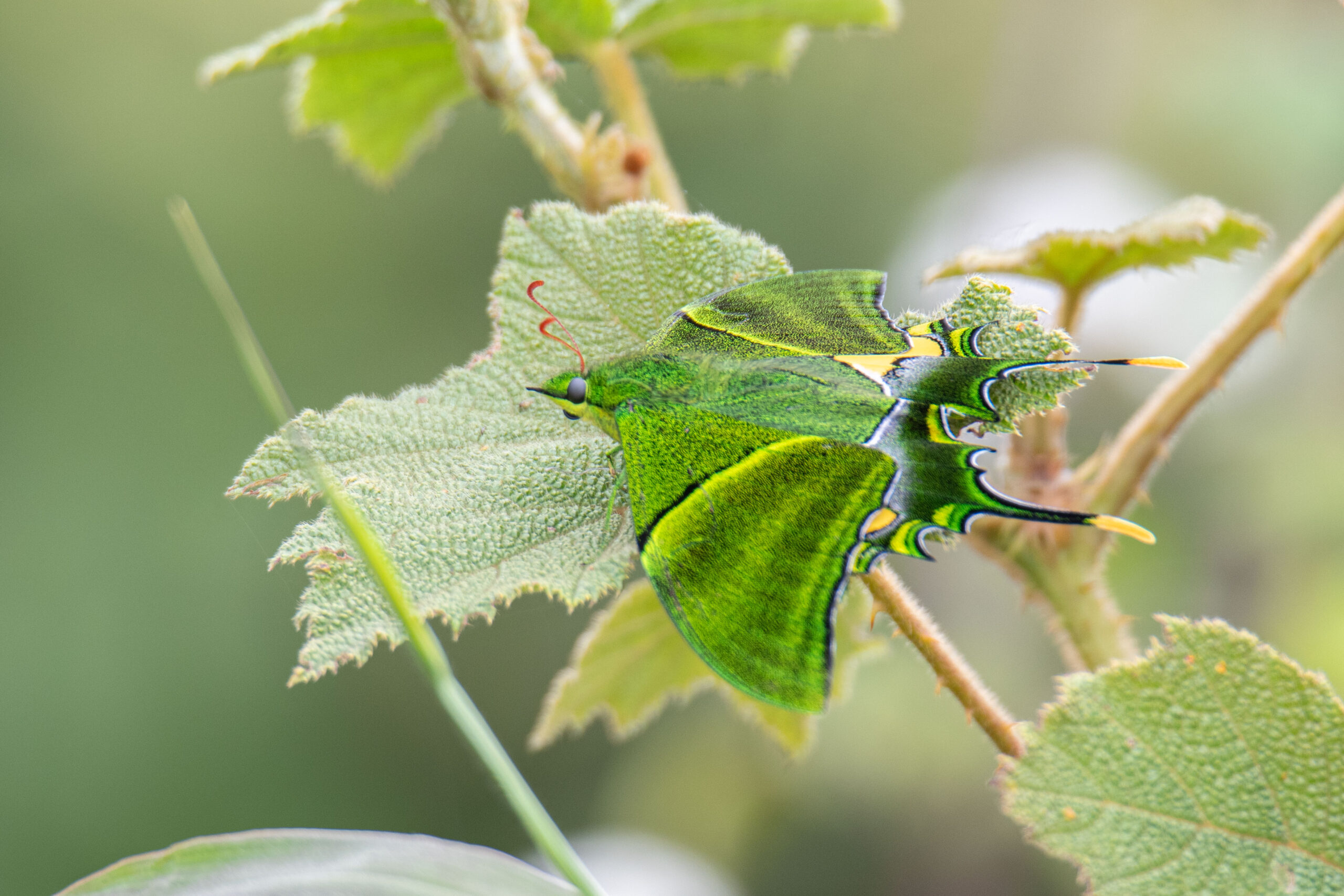
The Kaiser-I-Hind is very fast and is a strong flyer. It flies at tree-top level until it chooses to descend if there is strong morning sunlight. When overcast, males are known to descend and sit on low vegetation, where its disruptive, dull underside colouration makes it difficult to distinguish. Males visit damp patches and also suck moisture from leaves. Females rarely visit flowers or damp patches. Often found on forest clearings and open spaces flanked by forests on hills and mountains. These are mostly males, who establish territories and aggressively drive away other intruding males, and stopping virgin females in search of mates.
The Kaiser-I-Hind was first described as a new species by Hope in 1843. It was not until 1987 that the lifecycle of the butterfly was documented by Suguru Igarashi [1]. One of the known larval food plants is Magnolia campbellii. Other Magnoliaceae species have also been accepted in captivity.
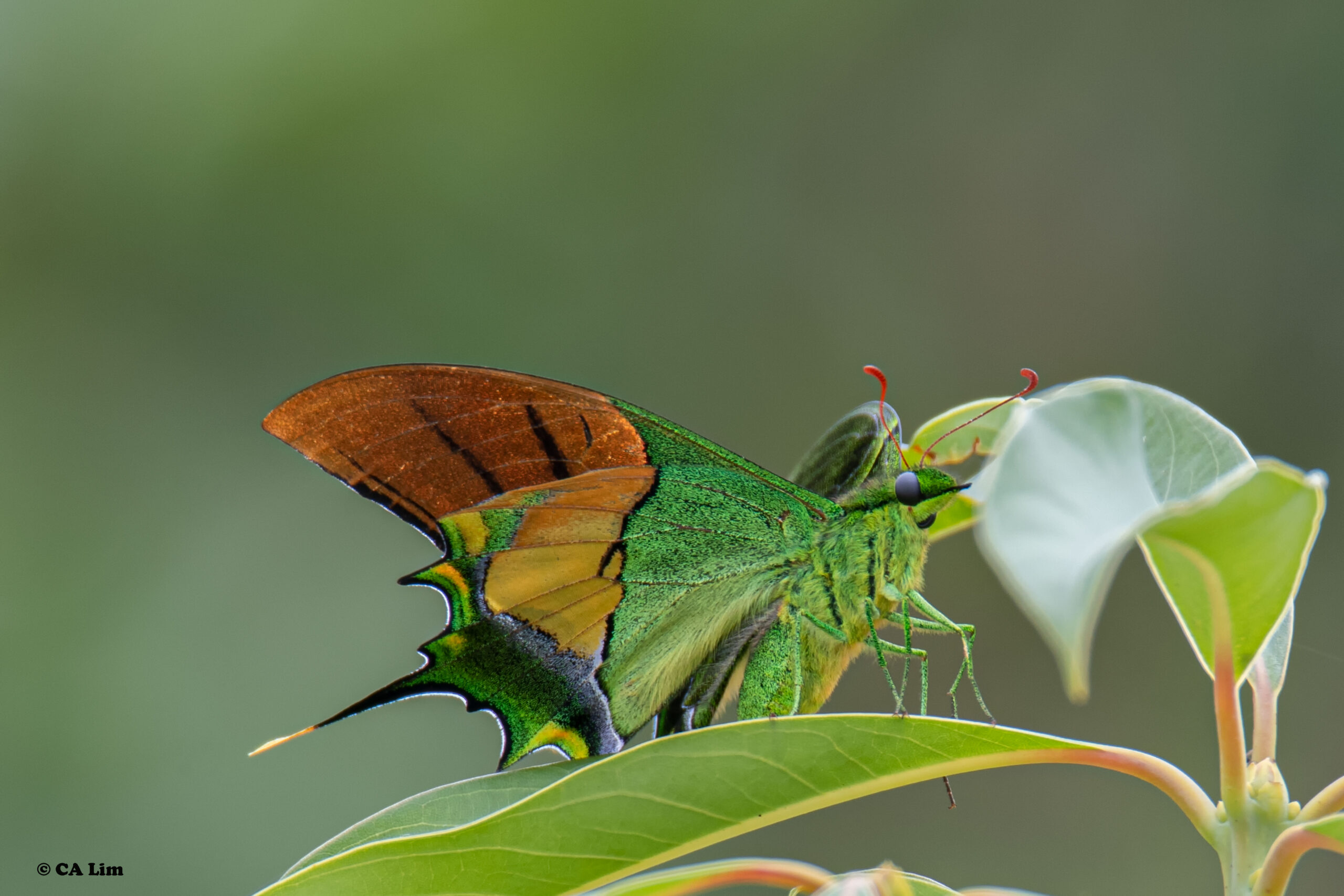
The iridescent green scaling on the wings of the Kaiser-I-Hind has been the subject of much research. The green iridescence of the wings was found to be due to three-dimensional photonic structures which have been examined by transmission electron tomography and computer modelling to reveal naturally occurring “chiral tetrahedral repeating units packed in a triclinic lattice”, the cause of the iridescence.[2]
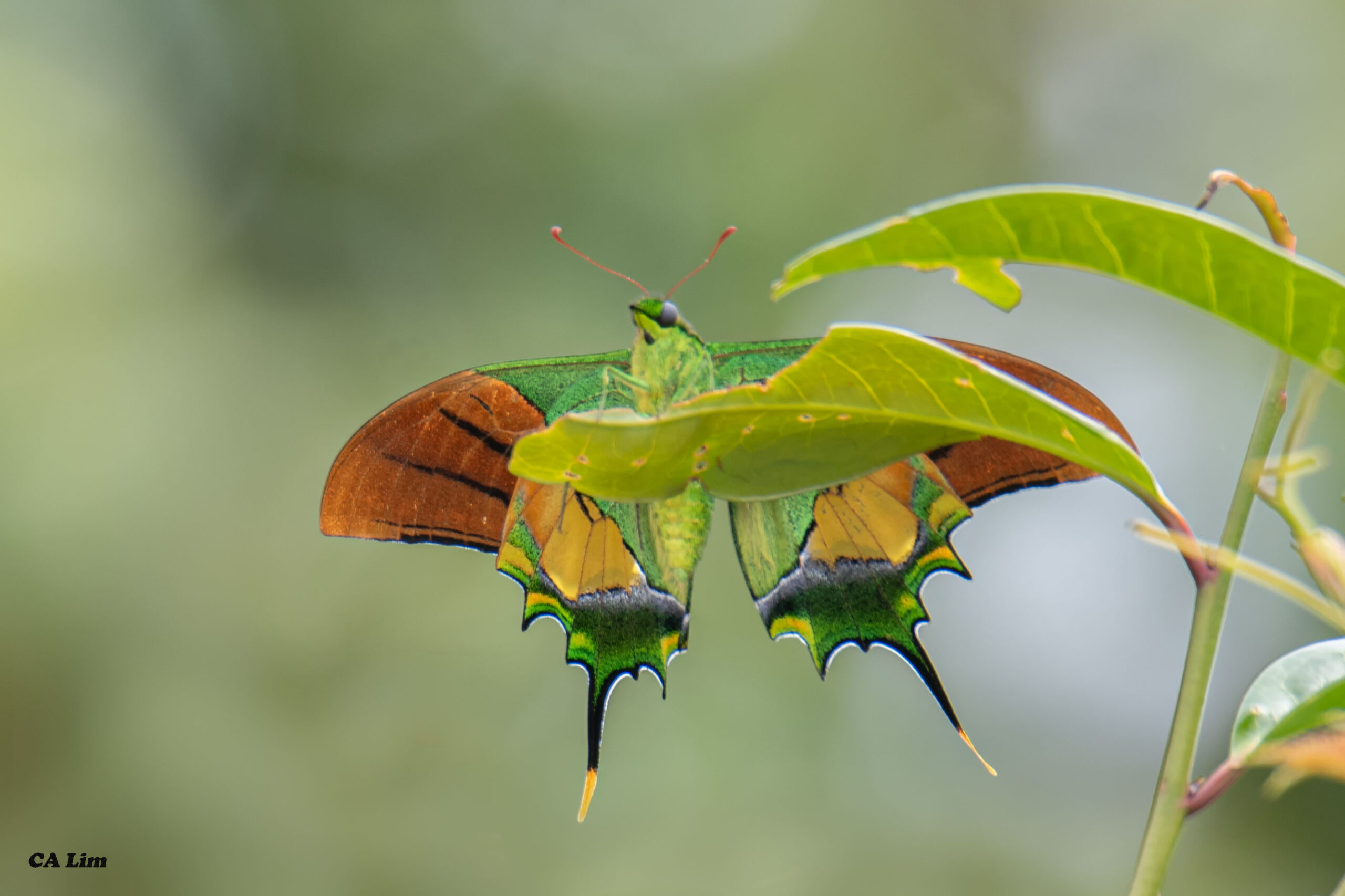
The photographs included here were taken by CA Lim on a trip to Doi Pha Hom Pok National Park, Chiangmai, Thailand in March 2022.
“The day began with a steep and demanding 2 hours trek up the park’s slopes. The trail led us through a misty forest, where the air was cool and filled with the sounds of nature. The mysterious mist surrounding us made the forest feel almost enchanted.
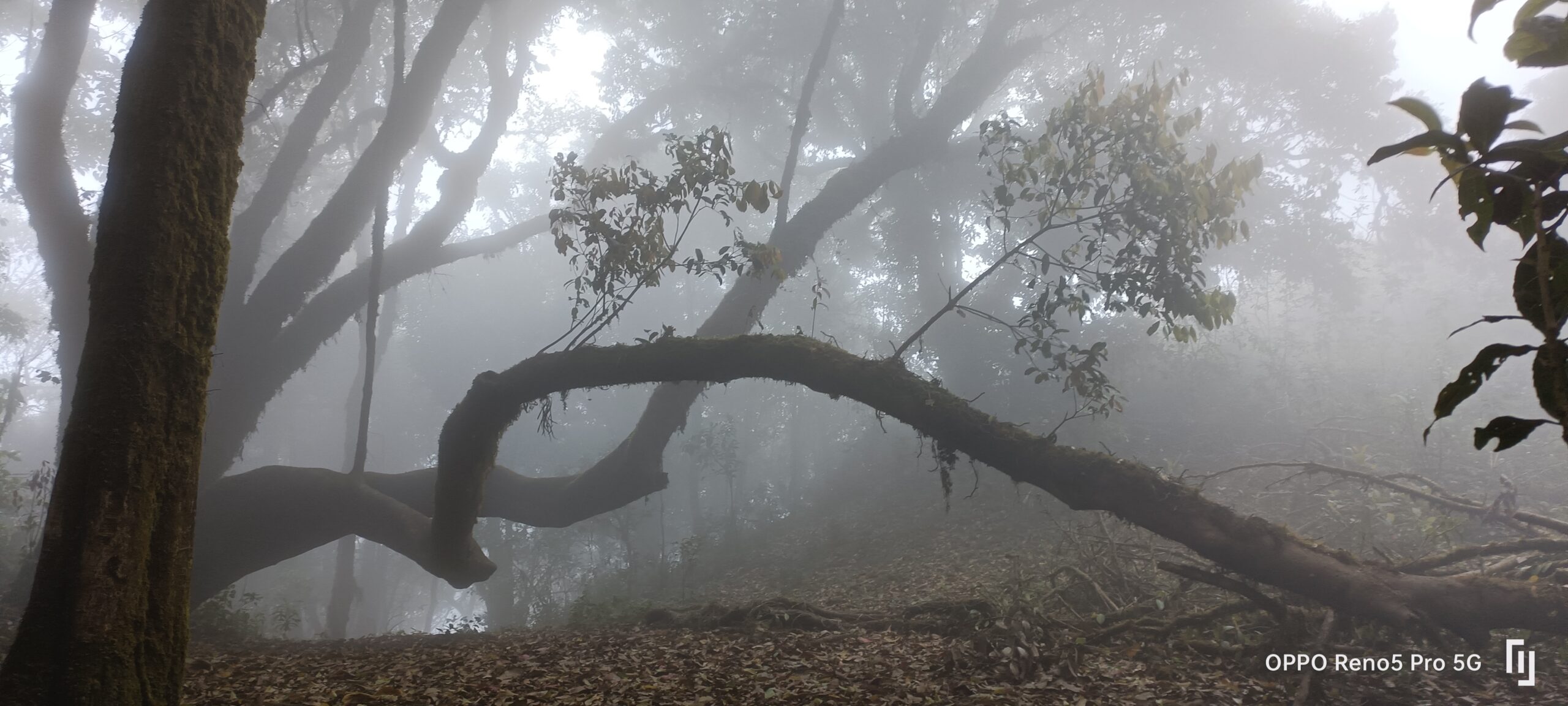
As we climbed higher, the mist started to thin, and the forest opened up to reveal incredible views. Along the way, we came across a patch of flowers blooming at higher altitudes.
At that moment, I couldn’t help but stop and marvel at nature’s artistry. As lovely as the flowers were, they weren’t the reason we were here.
Our mission was clear: we were on the hunt to capture photographs of the Kaiser-i-Hind. We reached the summit a little after 9 am, only to be greeted by overcast skies. The sun was hiding behind thick clouds, and for a moment, we couldn’t help but feel a bit anxious.
The Kaiser-I-Hind is known to be rare, and we wondered if the weather would deter its appearance. While we waited, we took some time to soak in the incredible views from the mountain. The panorama of rolling hills and misty valleys was breathtaking.
Just as we started to question whether we’d see them, out of nowhere, the Kaiser-I-Hind appeared, flitting energetically into view. It was a sight that left us all both thrilled and speechless. The butterfly’s flight was quick and erratic, making it nearly impossible to photograph in mid-air. I tried to capture its movement with my camera, but it was simply too fast! In the end, I decided to simply watch them in awe as they glided effortlessly through the air.
Antonio Giudici, our knowledgeable guide, had prepared us well for this moment.
He explained that the Kaiser-I-Hind would often rest after flying, and if we were patient, we might spot them perched. Following his advice, we tracked the butterflies movements, and before long, we found them resting nearby. They perched elegantly on branches, close enough for us to admire and photograph them.
Finally, I was able to capture some incredible shots of these stunning butterfly in all its glory.

Seeing the Kaiser-I-Hind up close was a dream come true. Its vibrant colours and intricate wing patterns are unlike anything I’ve ever seen—a true masterpiece of nature. It’s hard to describe the feeling of being in the presence of such a rare and beautiful creature. For a moment, time seemed to stand still, and all the effort of the climb felt more than worth it.”
References
[1] On the Life History of Teinopalpus imperialis (HOPE) in Northern India and its Phylogenetic Position in the Papilionidae. Igarashi, S. Lepidoptera Science, 1987, Volume 38, Issue 3, Pages 115-151
[2] Electron tomography and computer visualisation of a three-dimensional ‘photonic’ crystal in a butterfly wing-scale”. Argyros, A.; Manos, S.; Large, M.C.J.; McKenzie, D.R.; Cox, G.C., and Dwarte, D.M. Micron. 2002, 33 (5): 483–487.
